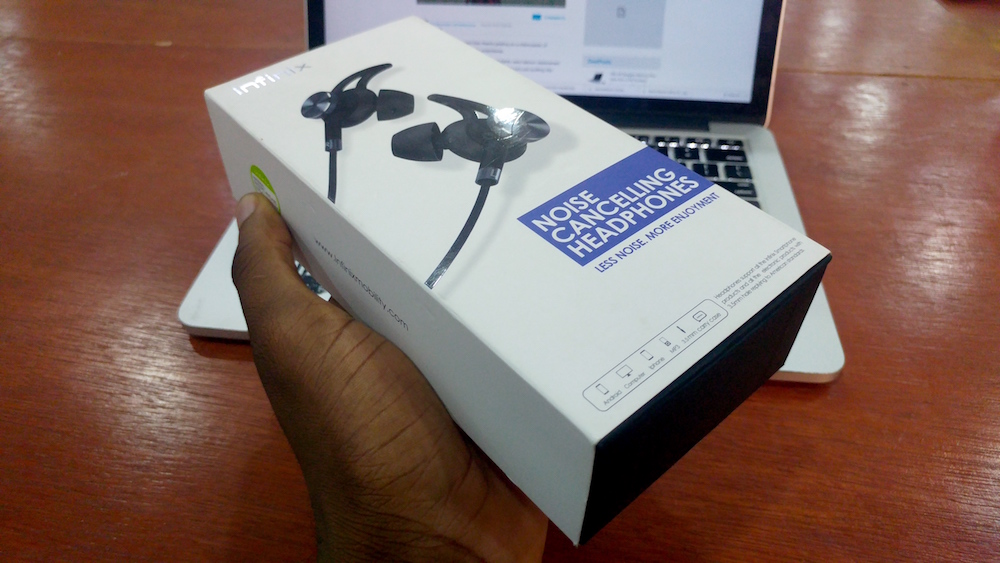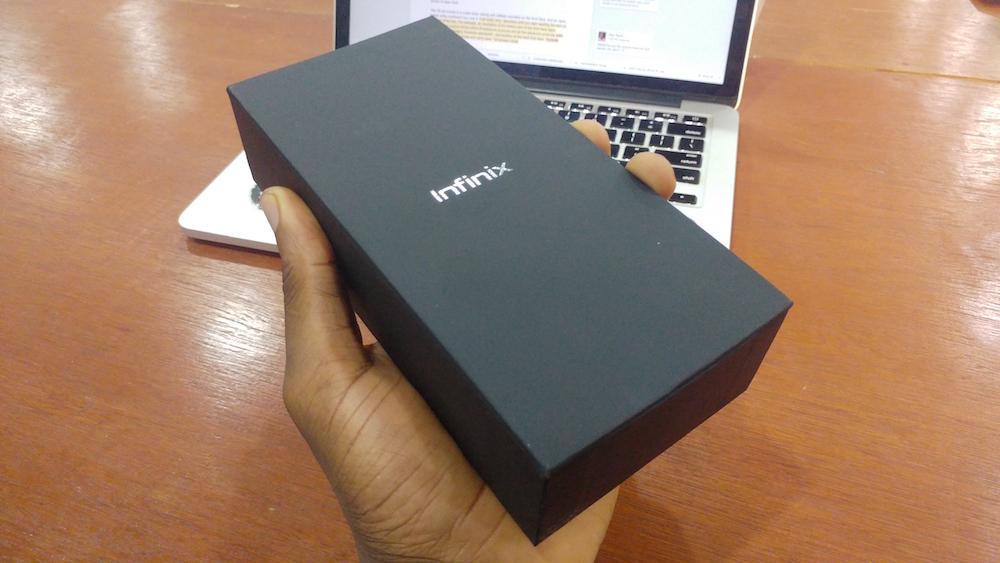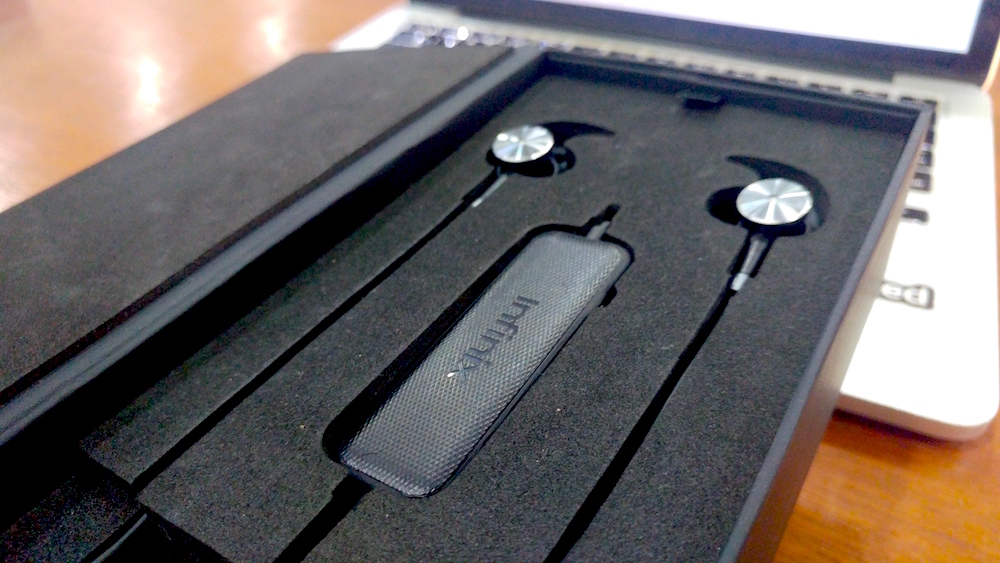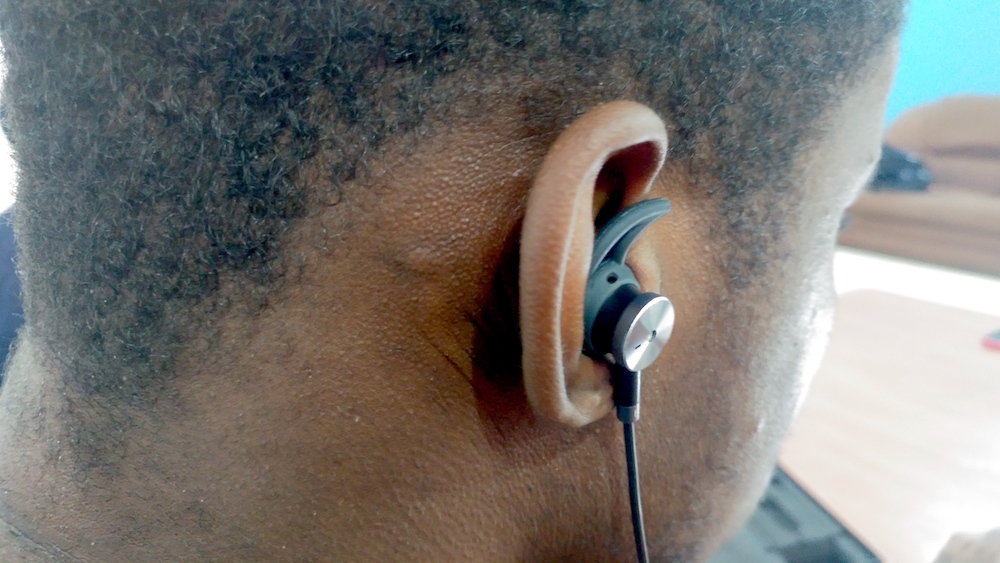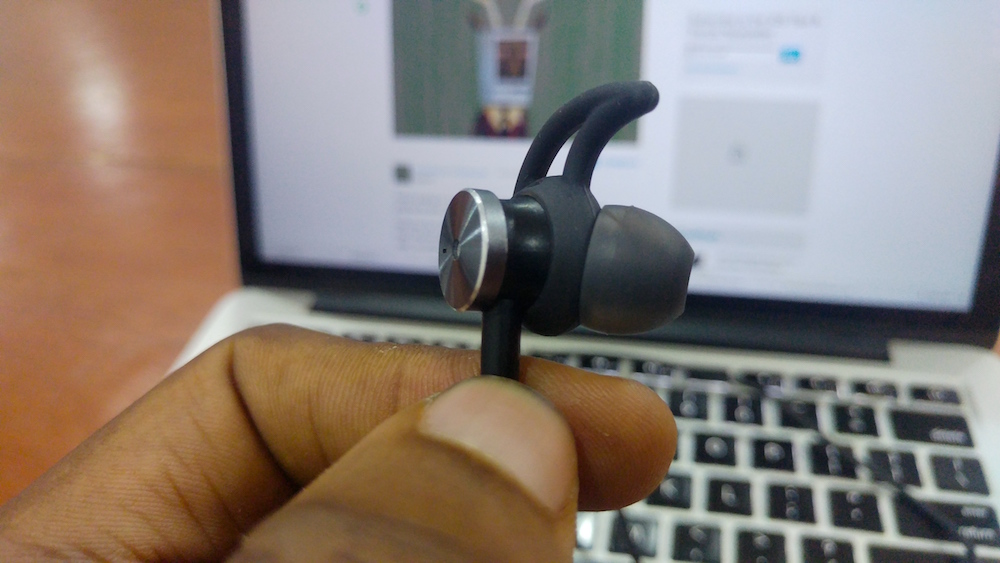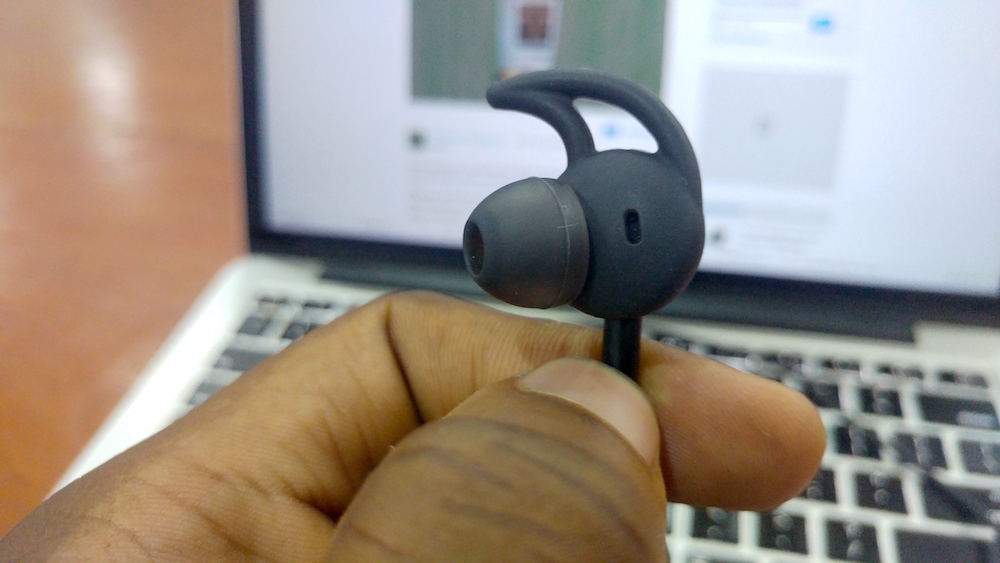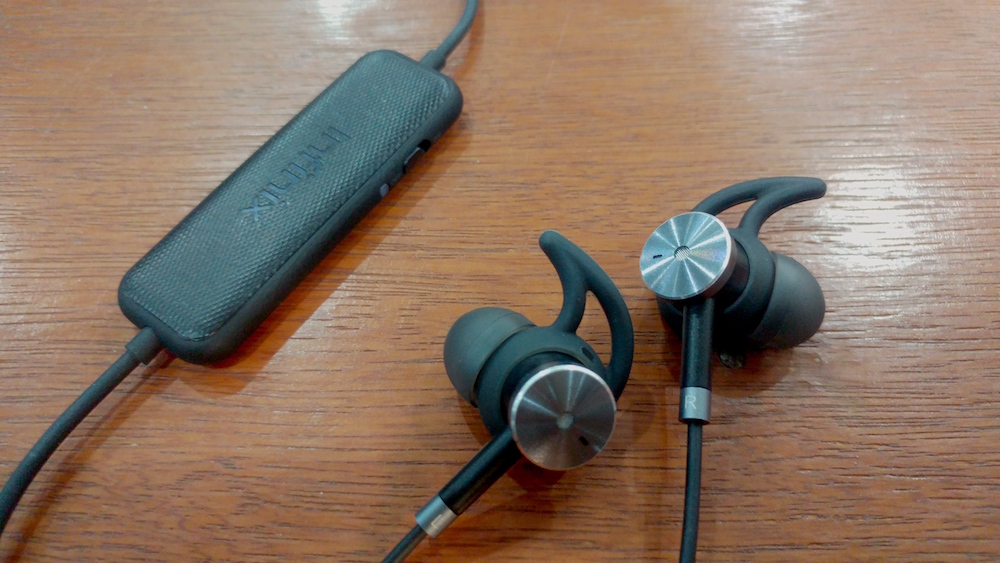Headphones and earphones are some of the most difficult things to review properly. That’s because, while I don’t want to geek out and lose your attention in 2 minutes, I also don’t want to ignore very important details, rehash the PR release and end up sounding like a bumbling idiot.
About two months ago, I let you know that the folks at Infinix were dipping their toes in the wearable whirlpool by releasing a smartwatch called X-Band and a pair of noise cancelling earphones called the XE-02. They sent the latter to Big Cabal HQ and I’ve spent the past week or so listening to (and through) them. I have thoughts, and it’s time for you to hear them. No pun intended.
*steps on tightrope*
*takes first step*
In the box…
[separator type=”thin”]
The XE-02 comes in a matte-black casing with Infinix inscribed on the front face, and an open ended white cardboard box over it. It all looks very…decorous until you start reading the text on the body of the box. For example, an inscription at the bottom end of the front face says, “Headphones support all the Infinix Smartphone products and all the electronic products with 3.5mm hole replying to American standards”, and another at the back that says, “Includs noise cancelling headphones and carry case.” [emphasis mine].
These are probably side-effects of the packaging (much like the headphones) being made in a country where English isn’t the primary language of communication. Still, a decent internet connection, Google translate, and a little attention to detail would have made this problem go away. Alright, enough nitpicking. A more important question than the copy on the casing is…
Does it sound good?
[separator type=”thin”]
I started my testing by playing songs with fat bass drums like Daft Punk’s Harder Better Faster Stronger (Alive 2007 Edit), Snakehips, Tinashe and Chance The Rapper’s All My Friends, and The Weeknd and Labrinth’s Losers and I was a little let down by the bass response (hardly surprising, considering the size of the driver) but I have to admit that while listening to that last one, I heard details I hadn’t heard before.
The mid-high frequencies were well represented in my review unit, and so when my brain adjusted to the lack of bass, I was able to enjoy listening to music for hours at a time before ear fatigue (inevitably) set in. More impressive is how the XE-02 represented the stereo spectrum. For this test, I listened to songs with interesting panning effects like Hardcore Pun, VLMIGHTY BVSS (two of my old projects) and Oh Dionysus by Kyrian Asher. Their representation was…average. I’m sure Infinix put effort into crafting a great listening experience, but I’m giving it a 6/10 as far as the sound goes. Possibly because I’ve heard a lot better.
After using it for a while, I had a theory that the XE-02 does better with genres like Neo-Jazz, Rock, and Electro house that don’t live or die by their bass representation and to test it, I played Axwell’s Barricade (Club Mix), Galantis’ No Money, Snarky Puppy’s Lingus, What About Me?, and Gretel and I found that they all sounded pretty great. Theory confirmed.
Much ado about noise cancellation
[separator type=”thin”]
There are two ways to think about this: Actively and Passively. Passive noise cancellation means blocking out unwanted sounds using the earphones’ physical materials. Things like thick foam cups, and (in this case) rubber buds that you insert into your ear canal are good examples. For the XE-02, I think Infinix used in-ear buds because they cost less than large cans, which means you don’t have to spend a ton of money to get them. N9,000 – N10,000 is not a lot.
This, in turn, has two side effects. First, the XE-02s are blocking out quite a bit of background noise, simply by filling up the entrance to the ear canal. Second, since the same canal is full of slimy wax, they are prone to slipping out. I guess this grip issue is why they included a “shark fin”, but that didn’t help. I’d have preferred some sort of hook that wraps around the ear lobes themselves like…this. No more jogging for you, Jimmy. Go to your room. Now that I think about it, let me add a third. Sharing these headphones becomes a bit of a problem because you take one look at Bob from HR, and you don’t know what manner of wax his ears are filled with. Sigh.
Please and please. Keep your tissues close by.
Active noise cancellation is a bit (okay, more than a bit) more technical, but I’ll try to leave out the boring math. All the sounds you hear are created by vibration. EVERYTHING. When something vibrates, it causes the air pressure around it to oscillate. That is, it makes the air around it to vibrate too. Think of it like a sine wave (see image). The speed of this vibration is what we audio people like to call frequency or pitch, and the taller the sine wave is (or the more intense the vibration is), the louder the sound you hear. Sound good? Stay with me, people.
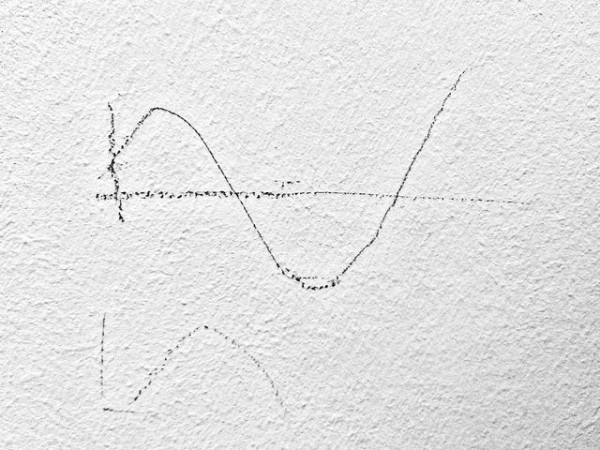
So, in 1822, a French mathematician named Jean-Baptiste Joseph Fourier (those of you who studied Engineering and/or read KA Stroud’s Advanced Engineering Mathematics like me probably hated him in your third year) figured out that no matter how complex a sound is, you can represent it as a series of sine waves.

What does this have to do with anything? Active noise cancelling headphones all have a small microphone that captures the background noise around you, and uses the Fourier Transform equation to separate the sounds into their respective sine waves. It then takes advantage of something called Phase Cancellation. It generates a wave that’s identical to the noise, but 180 degrees out of phase with it – an “anti-wave”, or opposite wave that ends up “cancelling” it.
Think of any number, say…17. If we want to turn 17 to 0, we need to subtract 17 from itself. So if we have one waveform [17], and we add the opposite waveform [-17], the result is [17 + (-17)] which is [17 – 17], which is equals to 0 (silence). By constantly taking in sound waves from your surroundings, and generating their anti-waves, active noise cancelling headphones are able to keep the noise out, and keep the music in. In theory.
I think the combination of the two kinds of noise cancellation is why Infinix refers to XE-02 as DNC (Dual Noise Cancelling) headphones. That’s supposed to make them more effective because in theory, each kind should complement the other. How does Infinix fare in this department though?
Verdict
[separator type=”thin”]
With headphones, you typically get what you pay for, and this case is no different. N9000 might seem like a steep price to pay for “just headphones”, and it’s difficult to argue with you if you feel that way about these. Throughout the time I spent with the XE-02 in-ear monitors, the things I liked about them weren’t the active noise cancelling or the “shark fin” they advertised, no. It’s the plain, old, decent sounding in-ear headphones that lay beneath it all.
With that in mind, my experience listening through the Infinix XE-02 can be captured in one sentence. Infinix’ XE-02 is a pair of decent-sounding noise cancelling headphones that don’t do a lot of noise cancelling.
If you’re an audiophile like me, you should probably look further up the price stack. Well, either that, or buy a pair of loudspeakers and get a dead-sounding room for your listening. If you’re a muggle on a budget and you don’t mind the dearth of bass, you should buy the Infinix XE-02.
I hear it’s on Jumia for N9000.





